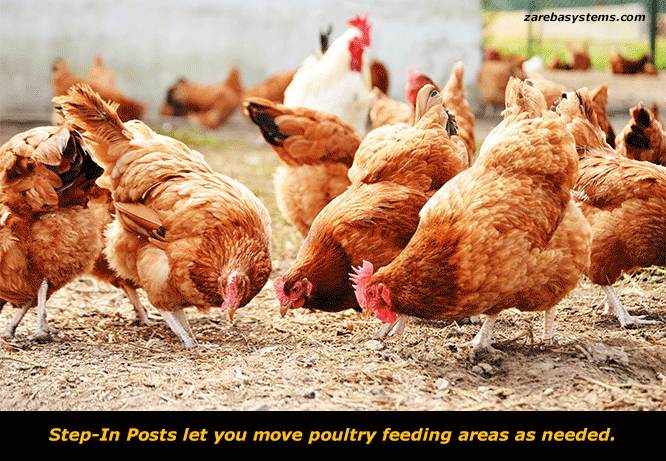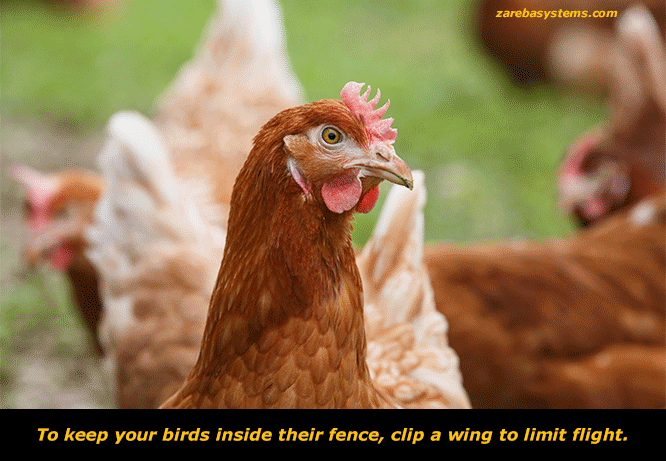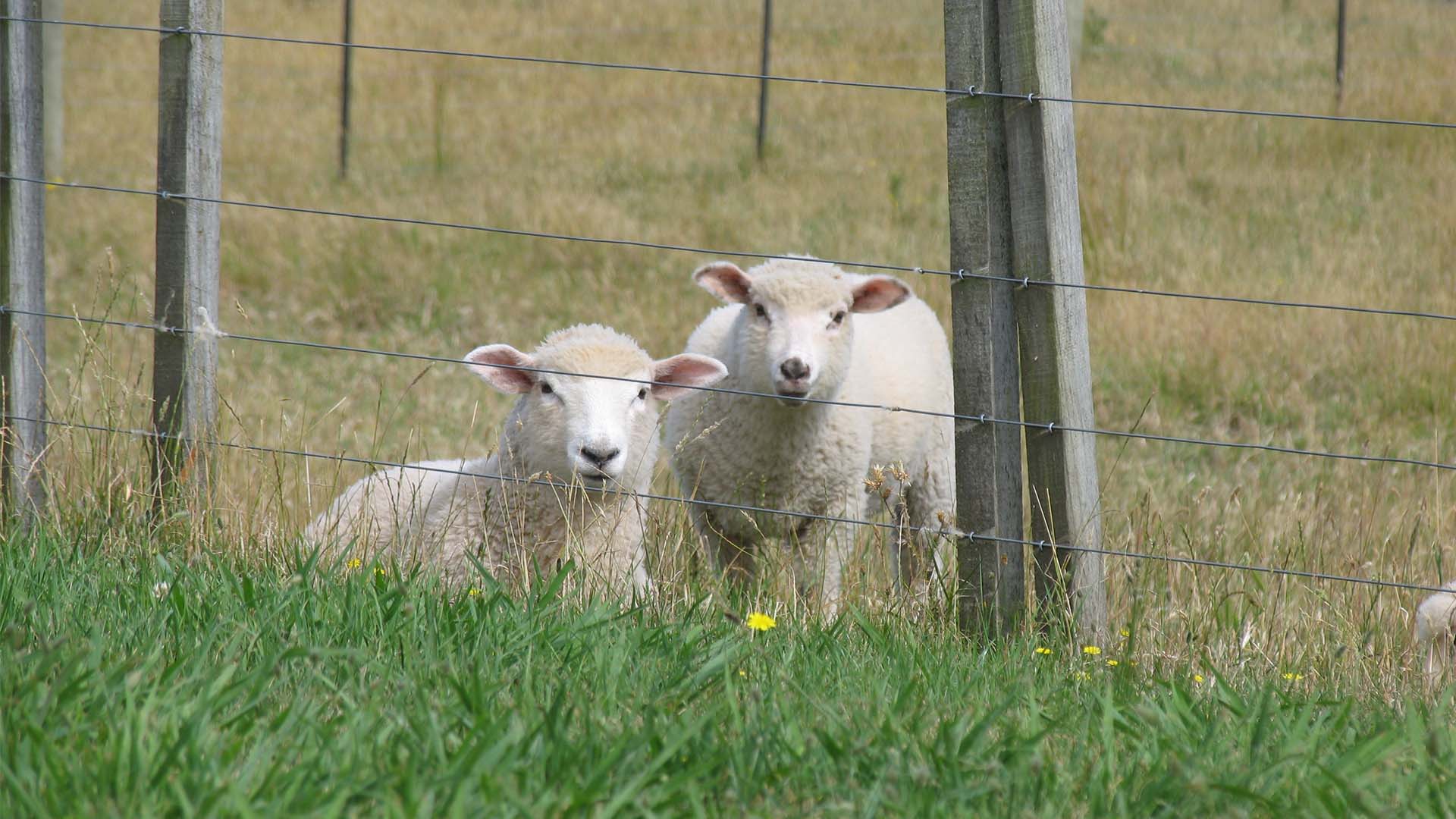
Setting up electric fencing for poultry may seem like a tricky proposition – after all, it seems that birds could easily fly over a fence. In the wild, that may happen, but not so with most farm-raised, free range poultry. In farm settings, these birds have their wings clipped, which then allows them to be managed by electric fencing.
Electric Fencing for Poultry
A large enclosure with access to grass, gravel and insects, as well as an opportunity to move around extensively, is the best way to keep poultry (and your buyers) happy. Most importantly, providing these basic elements will help you receive free range certification from the U.S. Department of Agriculture.
An electric fence enclosure is the most cost-effective way to contain poultry. To build this fence system, you will need:
- Fence Posts (Permanent or semi-permanent fence posts)
- Insulators (For installation on wood or T-posts)
- Electric Fence Wire (Aluminum is best for poultry)
- Grounding Supplies (Ground rods are a must for electric fencing)
- Fence Energizer (Select from a solar, plug-In or battery fence charger)
- Fence Tools (Equipment to install and maintain your fence)
- Fence Tester (Voltage testers measure the output of your fence)

Electric Fencing Installation for Chickens, Turkeys and Geese
Electric fencing for free range poultry are simple to install. In fact, the most common setups are a 1- or 2-strand electric fence system.
- Install fence posts at regular intervals around the fence perimeter.
- If using permanent fence posts, position two sets of insulators on each fence post.
- Place the bottom strand of aluminum wire approximately 6 inches off of the ground.
- If needed, place the second strand of wire approximately 10 to 12 inches above the bottom wire.
- Tighten both strands as needed.
- Install ground rods.
- Connect your electric fence charger to your ground rods and then to your fence.
- Test your fence output at regular intervals for sufficient voltage.
Best Fence Chargers for Poultry
While you can use any type of energizer to electrify a poultry fence, an AC/plug-in charger is your best choice.
The reason? To fight grass, weeds and other vegetation.
Here’s why: Since the bottom wire on your electric fence will only be about 6 inches off of the ground, grass and weeds can quickly reach the line and ground it. Having a strong AC unit will assure continuous electrical flow is pushed past any barriers.
Deterring Predators
Many people are surprised to discover that just two strands of wire will keep poultry confined. It works so well because most of the animals that prey on poultry – coyotes, weasels, foxes, dogs, raccoons and bobcats – aren’t very big themselves. Jumping over the fence is possible, but it takes agility that many of these animals don’t have. Others simply aren’t smart enough come up with tactics to avoid contact with a fence.
Further, remember that the first time an animal comes in contact with a fence is quite an experience. For most of those animals, it’s memorable enough to never want it to happen again.
The Benefits of Step-In Posts
Step-in posts, with wire strung between them, are perfect for poultry electric fencing. These can be installed quickly, but are strong enough to hold wire firmly.
When installing, it’s best to use plenty of posts, which will allow you to keep good tension on the line. More posts will also help you follow the contour of the ground better – you don’t want any gaps that could lead to escapes.
There’s another benefit to this unique set-up: No gates. Since the lines are so low, it’s also easy for you to enter and exit – just step over the fence to enter or exit. If you need to bring a tractor, truck or heavy loader into the pasture, just pull up a few posts, lay the wire on the ground and carefully drive over the line.
Step in posts also help you with vegetation maintenance. Pull them out, mow and re-install.
Wing Clipping of Turkey, Chicken and Geese
The key to making your electric fence work is to clip the wings on the birds in your flock.
Clipping chicken, turkey or geese wings will keep birds on the ground, unable to propel themselves into the air, over your fence, on to roofs and into trees. When clipping, remember that only one wing needs to have its flight feathers cut – trimming both wings is not needed.
Once their wings are clipped, your birds are ready for free-range life. Using an electric fence is perfect, low-cost way to contain them in a large outdoor enclosure. They can forage without wandering away from your property.

Your Poultry Fence by Zareba®
Are you ready to install your electric fence for your chicken, geese or turkey flock? Make sure you subscribe to the Zareba® eNewsletter for additional tips and special announcements.
You can also learn more about electric fencing installation, upkeep and livestock from Zareba®. Check out these helpful articles and guides:
- How Electric Fencing Works
- Tips to Install an Electric Fence
- Protect Your Livestock and Electric Fence from Lightning
- Guide to Fence Posts
- 6 Questions to Ask Before Installation
Still have a few questions? Contact the Zareba® Consumer Care Team at 855-5-ZAREBA.



